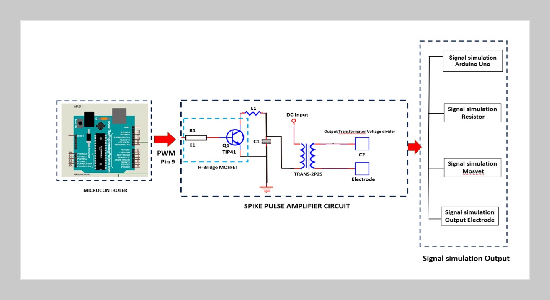- [1] W. H. FEDERATION. Stroke. 2015.
- [2] A. Adomaviˇciene, K. Daunoraviˇcien ˙ e, R. Kubilius, L. ˙ Varžaityte, and J. Raistenskis, (2019) ˙ “Influence of new technologies on post-stroke rehabilitation: a comparison of armeo spring to the kinect system" Medicina 55(4): 98. DOI: 10.3390/medicina55040098.
- [3] P. S. Lum, S. Mulroy, R. L. Amdur, P. Requejo, B. I. Pri�lutsky, and A. W. Dromerick, (2009) “Gains in upper extremity function after stroke via recovery or compensa�tion: potential differential effects on amount of real-world limb use" Topics in stroke rehabilitation 16(4): 237–253. DOI: 10.1310/tsr1604-237.
- [4] C. Nam, W. Rong, W. Li, C. Cheung, W. Ngai, T. Che�ung, M. Pang, L. Li, J. Hu, H. Wai, et al., (2022) “An exoneuromusculoskeleton for self-help upper limb reha�bilitation after stroke" Soft robotics 9(1): 14–35. DOI: 10.1089/soro.2020.0090.
- [5] Y. Bouteraa, I. B. Abdallah, and A. Elmogy, (2020) “Design and control of an exoskeleton robot with EMG�driven electrical stimulation for upper limb rehabilita�tion" Industrial Robot: the international journal of robotics research and application 47(4): 489–501. DOI: 10.1108/IR-02-2020-0041.
- [6] C. H. Ho, R. J. Triolo, A. L. Elias, K. L. Kilgore, A. F. DiMarco, K. Bogie, A. H. Vette, M. L. Audu, R. Ko�betic, S. R. Chang, et al., (2014) “Functional electrical stimulation and spinal cord injury" Physical Medicine and Rehabilitation Clinics 25(3): 631–654. DOI: 10.1016/j.pmr.2014.05.001.
- [7] K. Su, Z. Qiu, and J. Xu, (2023) “A 14-Bit, 12 V-to-100 V Voltage Compliance Electrical Stimulator with Redun�dant Digital Calibration" Micromachines 14(11): 2001. DOI: 10.3390/mi14112001.
- [8] Y.-K. Lo, R. Hill, K. Chen, and W. Liu, (2013) “Preci�sion control of pulse widths for charge balancing in func�tional electrical stimulation": 1481–1484. DOI: 10.0/Linux-x86_64.
- [9] E. W. Abryandoko, S. Susmartini, L. P. Widyo, and L. Herdiman, (2024) “Literature review: User interface of system functional electrical stimulation (FES) and arm robotic rehabilitation" Journal of Applied Engineer�ing Science 22(1): 55–68. DOI: 10.5937/jaes0-44644.
- [10] W. Rong, W. Li, M. Pang, J. Hu, X. Wei, B. Yang, H. Wai, X. Zheng, and X. Hu, (2017) “A Neuromuscular Electrical Stimulation (NMES) and robot hybrid system for multi-joint coordinated upper limb rehabilitation after stroke" Journal of neuroengineering and rehabilita�tion 14: 1–13. DOI: 10.1186/s12984-017-0245-y.
- [11] C. Urrea and J. Kern, (2011) “A new model for ana�log servo motors. Simulations and experimental results" Canadian Journal on Automation, Control and In�telligent Systems 2(2): 29–38.
- [12] N. SHEWALE and R. Deivanathan, (2018) “Modelling and analysis of DC motor actuator for an electric grip�per" Journal of Engineering Science and Technol�ogy 13(4): 862–874.
- [13] M. A. Alouane, W. Huo, H. Rifai, Y. Amirat, and S. Mohammed, (2019) “Hybrid fes-exoskeleton controller to assist sit-to-stand movement" IFAC-PapersOnLine 51(34): 296–301. DOI: 10.1016/j.ifacol.2019.01.032.
- [14] X. Bao, V. Molazadeh, A. Dodson, B. E. Dicianno, and N. Sharma, (2020) “Using person-specific muscle fatigue characteristics to optimally allocate control in a hybrid exoskeleton—preliminary results" IEEE transactions on medical robotics and bionics 2(2): 226–235. DOI: 10.1109/TMRB.2020.2977416.
- [15] N. A. Kirsch, X. Bao, N. A. Alibeji, B. E. Dicianno, and N. Sharma, (2017) “Model-based dynamic control allo�cation in a hybrid neuroprosthesis" IEEE Transactions on Neural Systems and Rehabilitation Engineering 26(1): 224–232. DOI: 10.1109/TNSRE.2017.2756023.
- [16] X. Bao, N. Kirsch, A. Dodson, and N. Sharma, (2019) “Model predictive control of a feedback-linearized hybrid neuroprosthetic system with a barrier penalty" Journal of Computational and Nonlinear Dynamics 14(10): 101009. DOI: 10.1115/1.4042903.
- [17] Z. Guo, S. Zhou, K. Ji, Y. Zhuang, J. Song, C. Nam, X. Hu, and Y. Zheng, (2022) “Corticomuscular integrated representation of voluntary motor effort in robotic con�trol for wrist-hand rehabilitation after stroke" Journal of Neural Engineering 19(2): 026004. DOI: 10.1088/1741-2552/ac5757.
- [18] K. E. Cheng, Y. Lu, K.-Y. Tong, A. Rad, D. H. Chow, and D. Sutanto, (2004) “Development of a circuit for functional electrical stimulation" IEEE Transactions on neural systems and rehabilitation engineering 12(1): 43–47. DOI: 10.1109/TNSRE.2003.819936.
- [19] C. Shendkar, P. K. Lenka, A. Biswas, R. Kumar, and M. Mahadevappa, (2015) “Design and development of a low-cost biphasic charge-balanced functional electric stim�ulator and its clinical validation" Healthcare technol�ogy letters 2(5): 129–134. DOI: 10.1049/htl.2015.0001.
- [20] K. S. Beekhuizen and E. C. Field-Fote, (2005) “Massed practice versus massed practice with stimulation: effects on upper extremity function and cortical plasticity in individuals with incomplete cervical spinal cord injury" Neurorehabilitation and neural repair 19(1): 33–45. DOI: 10.1177/1545968305274517.
- [21] C.-F. Chen, W.-S. Chen, L.-W. Chou, Y.-J. Chang, S.-C. Chen, T.-S. Kuo, and J.-S. Lai, (2012) “Pulse energy as a reliable reference for twitch forces induced by tran�scutaneous neuromuscular electrical stimulation" IEEE Transactions on neural systems and rehabilitation engineering 20(4): 574–583. DOI: 10.1109/TNSRE.2012.2188305.
- [22] T. K. Chuan, M. Hartono, and N. Kumar, (2010) “Anthropometry of the Singaporean and Indonesian pop�ulations" International Journal of Industrial Er�gonomics 40(6): 757–766. DOI: 10.1016/j.ergon.2010.05.001.
- [23] K. K. RI. Peraturan menteri tenaga kerja republik Indone�sia nomor: PER.03/MEN/1999. 1999.
- [24] S. Bruno, M. José, S. Filomena, C. Vítor, M. Demétrio, and B. Karolina, (2016) “The conceptual design of a mechatronic system to handle bedridden elderly individu�als" Sensors 16(5): 725. DOI: 10.3390/s16050725.
- [25] D. Copaci, E. Cano, L. Moreno, D. Blanco, et al., (2017) “New design of a soft robotics wearable elbow exoskeleton based on shape memory alloy wire actuators" Applied Bionics and Biomechanics 2017: DOI: 10.1155/2017/1605101.
- [26] V. H. Pinto, J. Gonçalves, and P. Costa, (2020) “Model�ing and control of a dc motor coupled to a non-rigid joint" Applied System Innovation 3(2): 24. DOI: 10.3390/asi3020024.
- [27] A. C. Valdiero, C. S. Ritter, C. F. Rios, M. Rafikov, et al., (2011) “Nonlinear mathematical modeling in pneu�matic servo position applications" Mathematical Prob�lems in Engineering 2011: DOI: 10.1155/2011/472903.
















